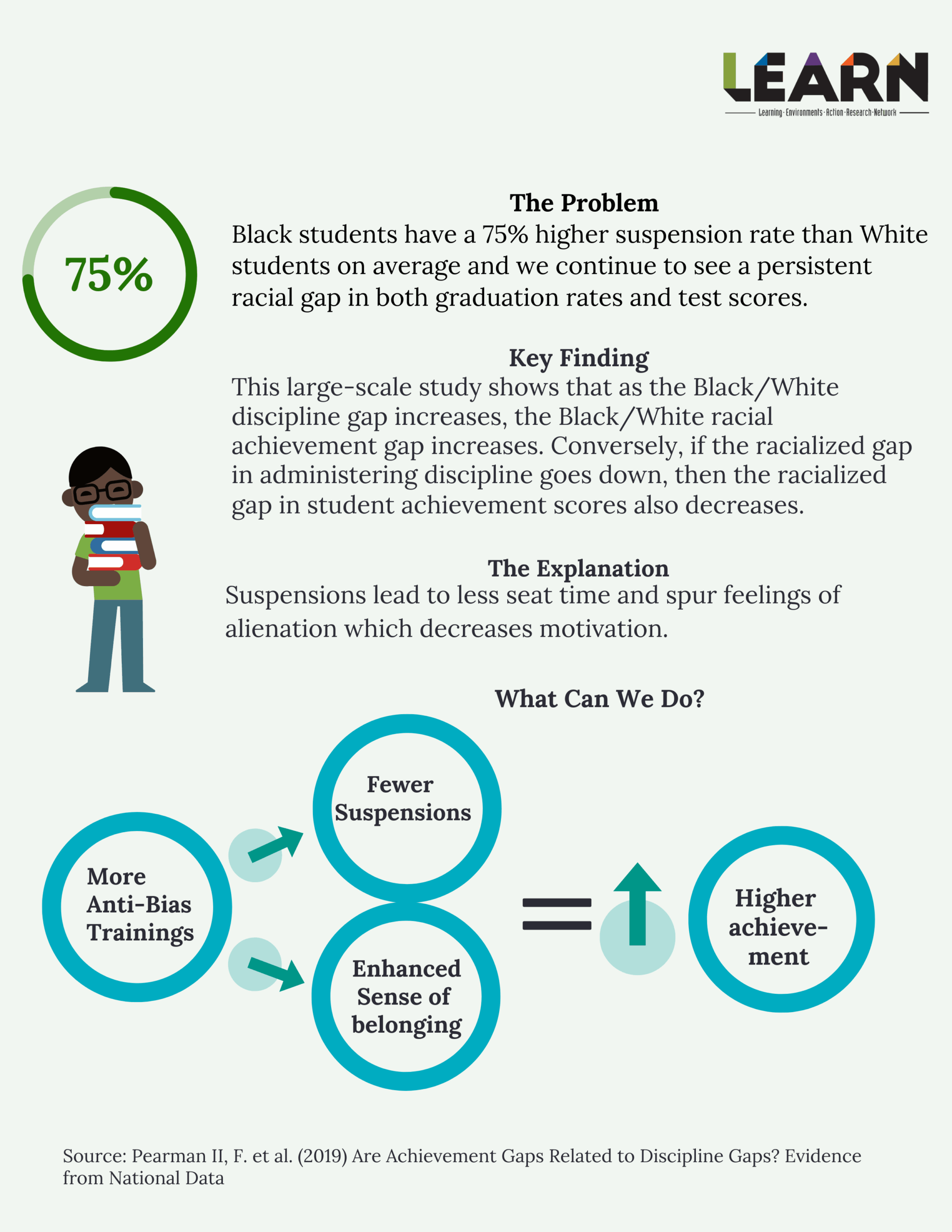
Key Takeaway: The Black/White Achievement Gap and the Black/White Discipline Gap are interrelated – if one increases or decreases, then so too will the other. Educators, stakeholders, and parents should take note of particular issues that contribute to these gaps, such as teacher bias and the alienation that Black students can experience in schools.
Criteria: First study to examine the connection between the racial discipline gap and the racial achievement gap at the national level; high quality research and findings.
Resource: Video: https://www.youtube.com/watch?v=-uImJbNt7rg
Journal Article: https://journals.sagepub.com/doi/full/10.1177/2332858419875440#:~:text=First%2C%20while%20discipline%20gaps%20are,districts%20with%20similar%20discipline%20gaps.
Title: Are Achievement Gaps Related to Discipline Gaps? Evidence from National Data
Year: 2019
Author: Francis A. Pearman II, F. Chris Curran, Benjamin Fisher, and Joseph Gardella
Primary Author: Francis A. Pearman II, https://cepa.stanford.edu/francis-pearman
Summation and Insights:
This digestible video from the American Educational Research Association provides valuable research on the Racial Discipline Gap (disparity in school suspensions upon racial lines) and the Racial Achievement Gap (refers to a disparity in academic achievement and more specifically test scores). The most striking finding? That the Black/White Racial Discipline Gap and the Black/White Racial Achievement Gap are linked to one another. In other words, if one goes up, then so too does the other. Conversely, if the racialized gap in administering discipline goes down, then the racialized gap in student achievement scores will also decrease.
You may be wondering…are these racial issues and their resulting gaps specific to Black and White students in America? It appears so. When the research team tested for other groups, such as the Hispanic/White Achievement and Discipline Gap, it turned out that even though a gap existed, it could be accounted for when the researchers controlled for a variety of district and community factors. This finding surprised even the research team and led them to conclude that other well-researched topics, such as teacher bias and feeling isolated at school are very real factors that contribute to the issues that many Black students face when they attend school.
Interested in learning more and working to close these gaps? Alongside this American Educational Research Association paper and video, there’s also great work on importing HBCU best practices into the K-12 system to combat underlying issues such as teacher bias and student alienation. Check out our LEARN write-up on “Imparting Wisdom: HBCU Lessons for K-12 Education” for successful strategies for fostering underserved and minoritized students.
